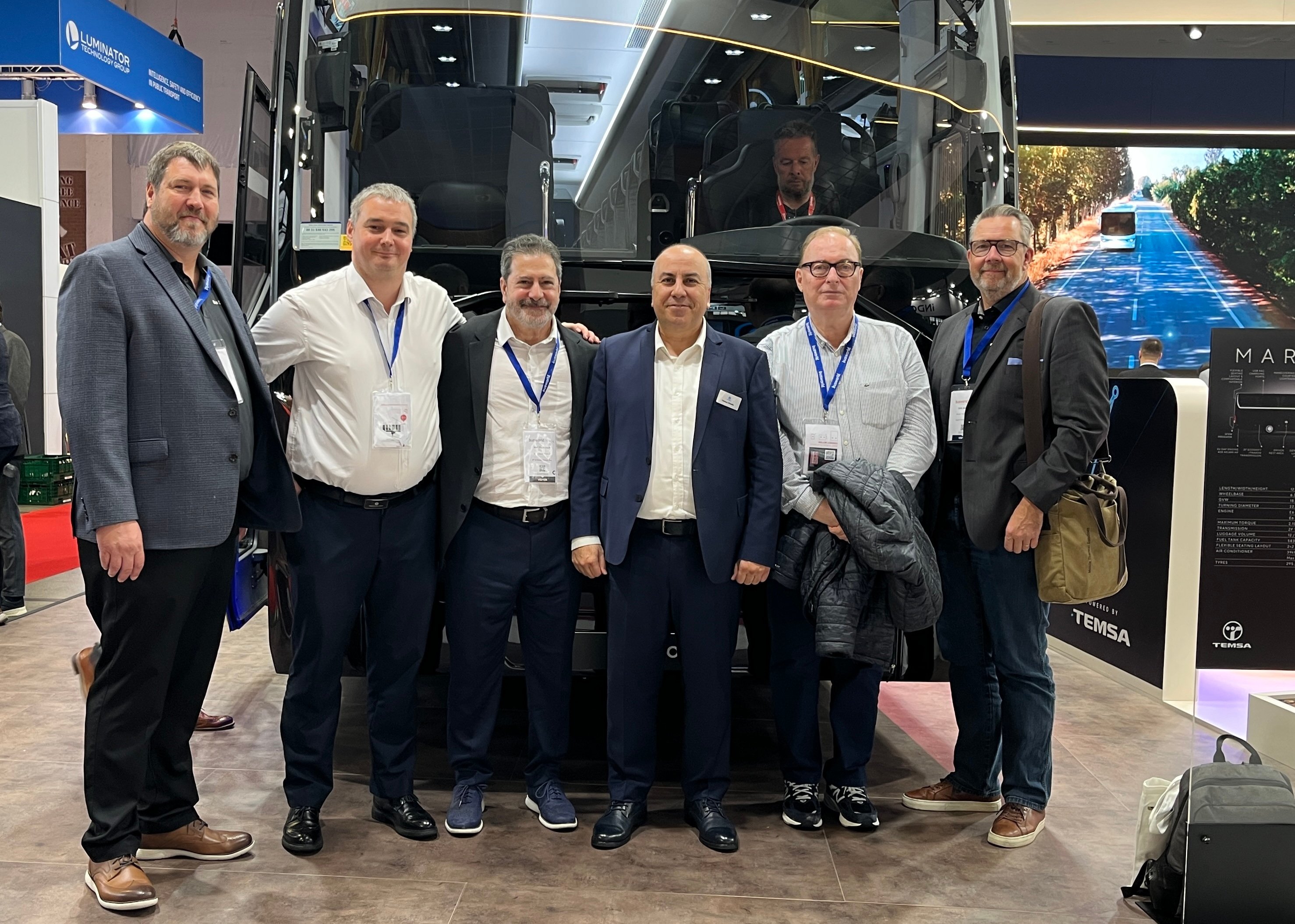When people think about HVAC performance in buses, they think of the hardware: the compressor, the...
Ahead of the Curve at Busworld 2025


In Brussels this October, BCC joined the global conversation shaping the next generation of buses at Busworld Europe, the world’s largest exhibition for the bus and coach industry. And the spotlight of this year? Natural refrigerants, integrated thermal systems, and modular designs—all central to BCC’s product roadmap.
Keep reading to explore the ideas heating up across the industry.
Reading the global barometer
Busworld provided a clear look at where the world’s bus market is heading. The major themes shaping this year’s discussions included:
- Evolving regulations: European policies on refrigerants and PFAS restrictions are setting the tone for cleaner, safer HVAC innovation worldwide and driving the need for new HVAC designs.
- Design innovation: Alongside adaptations to accommodate natural refrigerants, manufacturers are introducing integrated thermal systems and modular platforms that save space and improve efficiency.
- A surge in Chinese manufacturing: Rapidly advancing technology, lower costs, and transformative production capacity in China are reshaping the competitive landscape.
Natural refrigerants rising
One of the biggest trends at Busworld was the shift toward natural refrigerants such as CO2 (R-744) and propane (R-290). For HVAC manufacturers, this evolution brings both opportunity and challenge. These refrigerants are non-synthetic, have low global warming potential, and offer strong sustainability advantages—but they also change how systems must be built.
CO2 operates at much higher pressures than traditional refrigerants. For this reason, components like coils, compressors, and piping must be designed to handle greater mechanical stress. Propane, on the other hand, introduces challenges tied to its flammability. Systems using R-290 require sealed electrical components, pressure-relief safeguards, and isolated compartments to ensure no refrigerant can enter the passenger cabin in the event of a leak.
Across Europe, pilot systems using these refrigerants are already in service. At BCC, R&D teams are exploring how similar designs can be adapted for North American buses. From thicker-wall coils and reinforced piping to precision controls and improved heat-pump integration, these efforts reflect BCC’s commitment to developing climate-friendly systems that maintain performance, reliability, and passenger safety.
Integration that drives efficiency
Another strong theme at Busworld was system integration. Traditionally, bus climate systems relied on multiple separate components, with individual units for air conditioning, heating, and battery thermal management. Now, European suppliers are taking a more unified approach. By combining HVAC units, battery thermal management systems (BTMS), and heat pump components into compact, all-in-one assemblies, manufacturers can make smarter use of limited roof space, reduce weight, simplify maintenance, and improve overall energy efficiency.
A major advancement within this trend is the introduction of heat pump systems that recover and reuse waste heat from the bus. While standard air-to-air heat pump systems are still common in North America, new heat-harvesting designs showcased in Europe use energy that would otherwise be lost to keep buses warm in colder weather. This allows the system to operate efficiently down to about 5°F to –4°F (–15°C to –20°C).
BCC’s engineering teams are advancing the same concept, developing modular platforms that adapt to changing bus platforms and powertrains. Seeing this approach echoed across the industry reinforced confidence that BCC’s product philosophy is aligned with the future of bus design: integrated, efficient, and built for performance.
Competition and opportunity
While design and innovation took center stage, another conversation was hard to miss: how to stay competitive in a global market increasingly influenced by China’s rapid expansion.
Chinese bus manufacturers are growing at an extraordinary pace, supported by advanced technology, significant government investment, and production capacity that dwarfs most Western operations. In some cases, a single Chinese facility can build more than ten times the number of buses produced annually across North America. Their scale, speed, and access to resources allow them to deliver vehicles faster and at lower cost, challenging long-established brands in Europe and beyond.
This growing presence has prompted European policymakers to explore new measures that could balance the playing field, such as requiring a percentage of local manufacturing, similar to the “Buy America” rules already in place in the United States. Canada may follow suit, with discussions underway about setting domestic production thresholds that would help strengthen regional manufacturing and supply chains.
For BCC, this changing landscape reinforces the importance of focusing on what it does best: building high-quality HVAC-R systems in North America with dependable local support. Proximity to customers, strong technical partnerships, and flexible engineering capabilities are powerful advantages that global scale alone can’t replicate. By continuing to innovate locally while staying informed globally, BCC is well positioned to meet market challenges head-on and turn them into opportunities for growth.
Charting a course to the future of buses
The message from Busworld 2025 was clear: the future of bus climate control will be defined by cleaner refrigerants, integrated systems, and smarter design. For BCC, these trends aren’t new. As the industry changes, BCC is moving in lock-step towards the most forward-thinking advancements.
Whether you’re exploring natural refrigerants, looking to integrate multiple systems into one efficient platform, or planning your next generation of vehicles, BCC is ready to help you stay ahead of the curve.
Contact our team to discuss solutions that match your goals for performance, reliability, and sustainability.
October 30, 2025



